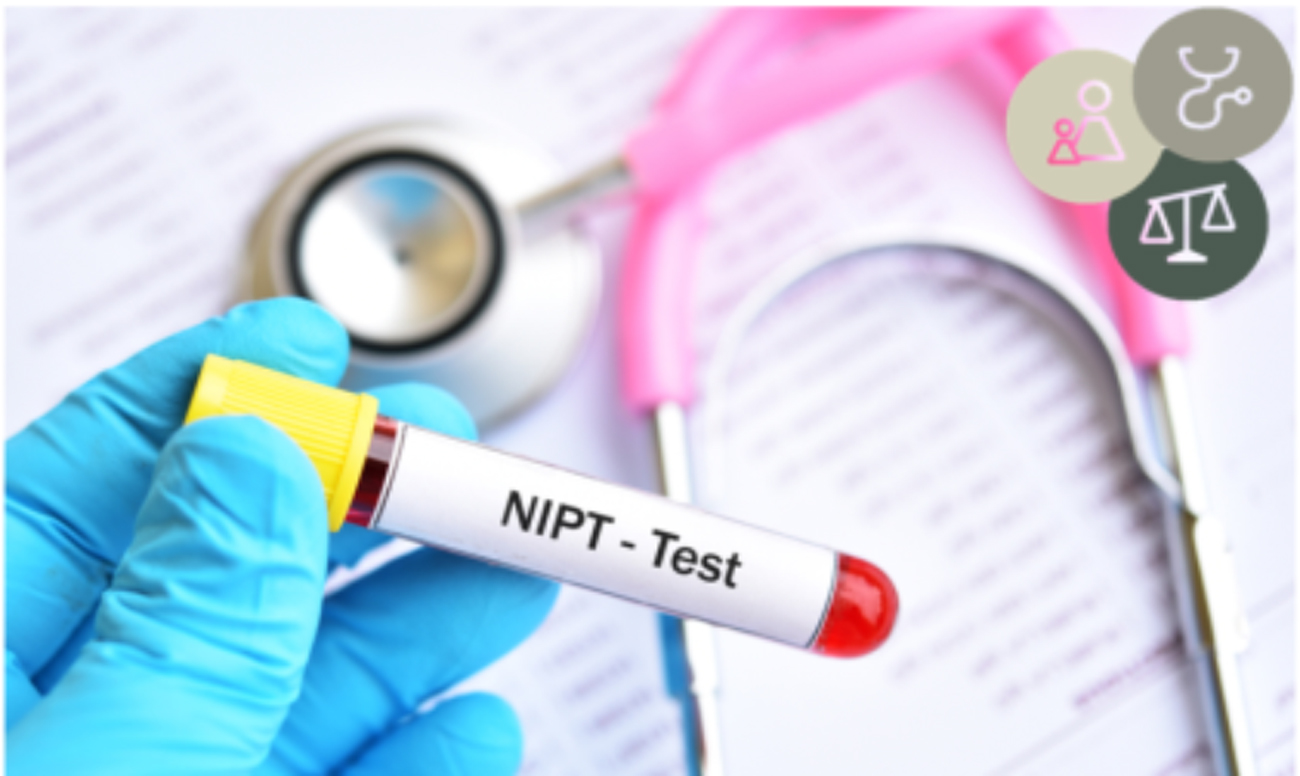
Every Mom’s Guide to Prenatal Testing
There is much a pregnant woman can do to take care of herself during pregnancy. Following a healthy, safe diet; getting regular exercise as advised by your doctor; and avoiding exposure to potentially harmful substances can help reduce the risk for problems during pregnancy and ensure the infant’s health and development.
Taking good care of yourself during pregnancy is the most important way to have a healthy baby
Avoiding tobacco smoke and alcohol use during pregnancy have been shown to decrease the risk for “Sudden Infant Death Syndrome” and birth defects. In addition, taking 400 micrograms of folic acid daily reduces the risk for neural tube defects by 70% (birth defects of the brain, spine, or spinal cord).
However, taking good care of yourself during pregnancy might not be enough and your doctor will ask you take some tests to make sure you’re in good health and that you don’t have any illnesses or other conditions that could affect your pregnancy.
Routine Prenatal Tests
On your first prenatal visit to your doctor, you’ll be asked to do blood tests to determine your blood type and Rh factor; your iron level and hemoglobin level to see if you’re anemic; your blood glucose level to check for diabetes. Through your pregnancy, you will also be tested for HIV, hepatitis B, syphilis and other viruses like cytomegalovirus, as well as whether rubella (German measles), since coming down with these illnesses while pregnant, especially in the first three months, can cause pregnancy loss or birth defects in your baby.
Prenatal Genetic Tests
Screening tests:
These set of prenatal tests will be performed between weeks 14-18 of the pregnancy, and will include an ultrasound screening, which can help determine your due date more accurately, and also look for abnormalities in the fetus. During this time, your doctor will ask you to take blood tests (known as a triple screen or a quad screen) that will measure blood levels of alpha-fetoprotein, Estriol, hCG (human chorionic gonadotropin), and inhibin.
A newer blood test name ‘First Trimester Screening”, conducted earlier at 10-14 weeks of the pregnancy and used in conjunction with an ultrasound screening. This test measures PAPP-A (pregnancy-associated plasma protein A) and free HCG in mother’s blood and now is considered part of the routine prenatal care especially for women who are at risk of having a baby with a chromosomal abnormality.
These tests are screening tests that can tell you if your baby has a higher risk of having a certain disorder or disease, but they can’t tell you for certain that he’ll be born with it. Depending on the results of the screening tests, the age of the mother (ages 35 and above), or the family history of the mother-to-be, the doctor may then suggest further confirmatory tests, such as non-Invasive Prenatal Testing (NIPT), chorionic villus sampling (CVS) or amniocentesis.
Amniocentesis and CVS: The invasive tests
For decades, amniocentesis or CVS were considered the gold standard confirmatory tests for detection of chromosomal abnormalities in the fetus. CVS can be performed at weeks 10-12 of the pregnancy, either by passing a thin tube from the vagina into the cervix to remove a sample of tissue from the chorionic villi (which makes up the placenta), or by inserting a needle through the abdominal wall to obtain a tissue sample. Amniocentesis, which is performed between weeks 16-18 of the pregnancy, involves the insertion of a needle through the abdominal wall into the uterus, removing some of the amniotic fluid (fluid around the baby).
However, as both involve inserting a needle to the pregnancy sac, they carry a small risk of infection or miscarriage and hence they gained the name of “invasive prenatal testings”.
The Non-Invasive Prenatal Testing (NIPT):
NIPT, is the most recent way to test a fetus for the presence of chromosomal abnormalities—particularly Down syndrome—without the risks associated with more invasive procedures like amniocenteses or CVS.
What seemingly differentiates NIPT from other prenatal tests is providing conclusive results equivalent to that of invasive procedures like CVS or amniocentesis, with just the ease of obtaining a sample of maternal blood and avoiding complications of the invasive methods. This sample of the mother’s blood contains some of the fetus’ DNA sufficient in the presence of trained experts and the high-end machines in detecting possible chromosomal abnormalities and birth defects with approximately 99% accuracy.
Why NIPT is Done
The purpose of non-invasive prenatal testing is to screen all of the fetus chromosomes for abnormalities that might lead to abortion or birth defects. The most common chromosome anomalies are Trisomy 21 (Down syndrome), Trisomy 18 (Edwards syndrome), Trisomy 13 (Patau syndrome) and Monosomy X (Turner’s syndrome).
NIPT can be done for any pregnancy, but it is especially recommended for pregnancies in which there is a significant risk for chromosomal abnormalities. These are pregnancies in which:
- The mother is over the age of 35 by the due date
- There is a family history of chromosomal abnormalities, such as the birth of a previously affected child.
- Have had miscarriages or stillborn babies in the past.
- There have been abnormal results from a pregnancy ultrasound.
- Poor result of the screening methods (PAPP-A and free HCG).
When NIPT is Done
It is possible to get a useful result from an NIPT test anytime after the 10th week of gestation, and the test can be performed at any time throughout the remainder of the pregnancy (typically at 10–22 weeks).
How NIPT Works
Fetal cells can persist in maternal blood for years, but NIPT looks for circulating fetal DNA that is not attached to any cell. This cell-free fetal DNA remains after fetal cell breakdown but disappears within hours, meaning that any such DNA found in mom is from the baby she is currently carrying, not an older sibling. Thus, with the right technology (which took more than ten years to develop), specialized labs, trained doctors can now isolate and measure the amounts of fetal DNA present in the mother’s blood.
Try not to be too anxious with these many prenatal tests! Remember, that “the vast majority of unborn children are perfectly normal, provided the mother has taken care of herself and her child.”









Patricia Rodriguez
Ut wisi enim ad minim veniam, quis laore nostrud exerci tation ulm hedi corper turet suscipit lobortis nisl ut aliquip erat volutpat ignissim qui blandit praesent luptatum zzril delenit augue duis.
Dylan Johnston
Ut wisi enim ad minim veniam, quis laore nostrud exerci tation ulm hedi corper turet suscipit lobortis nisl ut aliquip erat volutpat.